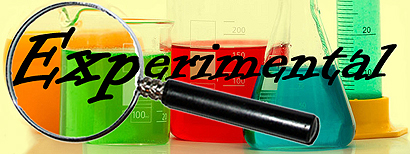Lizard See, Lizard Do: First Evidence of Imitation in a Reptile
Episode 68 by Mary Bates (Click here to directly access the MP3)

Listen to the Podcast to learn more!
Further Reading:
Kis, A., Huber, L., and Wilkinson, A. (2014). Social learning by imitation in a reptile (Pogona vitticeps). Animal Cognition. doi: 10.1007/s10071-014-0803-7.
Manrod, J. D., Hartdegen, R., and Burghardt, G. M. (2008). Rapid solving of a problem apparatus by juvenile black-throated monitor lizards (Varanus albigularis albigularis). Animal Cognition 11(2): 267-273. doi: 10.1007/s10071-007-0109-0.
Wilkinson, A., Coward, S., and Hall, G. (2009). Visual and response-based navigation in the tortoise (Geochelone carbonaria). Animal Cognition 12(6): 779-787. doi: 10.1007/s10071-009-0237-9.

- November 26
- , 2014
Ebola: Questions and Answers
Episode 67 by Cris Felipe-Alves (Click here to directly access the MP3)
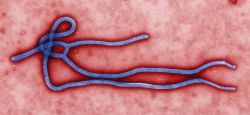
This week, Experimental hit the streets to answer some of the questions the public have about Ebola. Listen to this latest Experimental podcast to learn more about this terrible disease.
Listen to the podcast to learn more.
References:
http://www.cdc.gov/vhf/ebola/; CDC webpage
http://www.bbc.com/news/world-africa-29262968; Ebola ‘threat to world security’- UN Security Council
http://www.nytimes.com/2014/09/13/world/africa/ebola-who-africa.html?_r=0; Ebola Outpaces Global Response, W.H.O. Says
Science. 2014 Sep 12;345(6202):1369-72. “Genomic surveillance elucidates Ebola virus origin and transmission during the 2014 outbreak”
Journal of Virology 77 (18): 9733–9737. “Ebola Virus Pathogenesis: Implications for Vaccines and Therapies”
Emerg Infect Dis. 2005 Mar;11(3):385-90. “Ebola virus antibody prevalence in dogs and human risk”
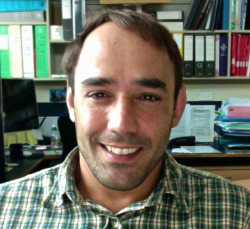
Cris Felipe-Alves has worked as a researcher in both academic and private environments. He’s currently finishing a postdoctoral fellowship at the University of Otago (UoO) in New Zealand before moving permanently to the West Coast of Canada. He’s also an alumni of the UoO’s Centre for Science Communication with specialization in Natural History Filmmaking and Communications. Watch some of his YouTube movies. Learn more about Cris from his LinkedIn resume.
- October 24
- , 2014
Mystery of the Floating Plastic
Episode 66 by Cris Felipe-Alves (Click here to directly access the MP3)

Reference
Plastic debris in the open ocean - Proceedings of the National Academy of Sciences of the USA.
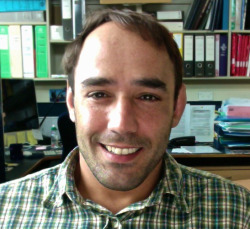
Cris Felipe-Alves has worked as a researcher in both academic and private environments. He’s currently finishing a postdoctoral fellowship at the University of Otago (UoO) in New Zealand before moving permanently to the West Coast of Canada. He’s also an alumni of the UoO’s Centre for Science Communication with specialization in Natural History Filmmaking and Communications. Watch some of his YouTube movies. Learn more about Cris from his LinkedIn resume.
- September 2
- , 2014
Rubber Made From DANDELIONS!
Episode 65 by Meredith Hanel (Click here to directly access the MP3)
(Access the full text transcript)

Listen to the Podcast to learn more!
For More Information:
On the Rebound: Scientists revive search for new rubber sources. Science News, August 2013.
Fraunhofer and Continental come together when the dandelion rubber meets the road. Fraunhofer Press Release, October 2013.
Dutch Biotech Firm to Make Car Tires From Hybrid Dandelions. Inhabitat weblog, February 2013.
Abbotsford company’s Russian dandelion could provide eco-friendly rubber. The Vancouver Sun, May 2014.
Continental Wins GreenTec Award 2014 for Dandelion rubber. Continental Press Release, May 2014.

- August 19
- , 2014
Pandas: How Carnivorous Bears Became Vegetarians
Episode 64 by Mary Bates (Click here to directly access the MP3)
(Access the full text transcript)

Listen to the Podcast to learn more!
For More Information:
Nie, Y., Zhang, Z., Raubenheimer, D., Elser, J. J., Wei, W., Wei, F. (2014), Obligate herbivory in an ancestrally carnivorous lineage: the giant panda and bamboo from the perspective of nutritional geometry. Functional Ecology.
Ruiqiang Li et al. (2010). The sequence and de novo assembly of the giant panda genome. Nature 463 (21): 311–317.
Zhu, L., Wu, Q., Dai, J., Zhang, S., and Wei, F. (2011). Evidence of cellulose metabolism by the giant panda gut microbiome. PNAS 108(43): 17714-17719.

- August 12
- , 2014
The Meaning of Life
Episode 63 by Cris Felipe-Alves (Click here to directly access the MP3)

For more information, check out the scientific discussion in “Nature Reviews: Microbiology”
Ten reasons to exclude viruses from the tree of life
Reasons to include viruses in the tree of life
Six comments on the ten reasons for the demotion of viruses
Ten good reasons not to exclude giruses from the evolutionary picture
There is no such thing as a tree of life (and of course viruses are out!)
Viral genomes are part of the phylogenetic tree of life
Compelling reasons why viruses are relevant for the origin of cells
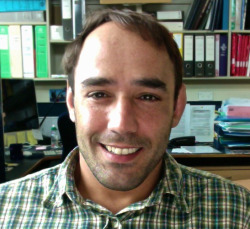
- August 5
- , 2014
EINSTEIN! Still the Champion… Of Physics!
Episode 62 by Scott Unger (Click here to directly access the MP3)
(Access the full text transcript)

Gravitational Lensing - the Gravity of the galaxy in the middle is bending the light from farther away around it - allowing observers from Earth to focus on the far-away celestial bodies.
Einstein. One of the biggest minds science has ever known and arguably the most important scientist to the advancement of our understanding of the universe the world has ever known. And much like a prize fighter – some would seek to prove Einstein wrong. Defeat the Champ and you win the belt.
Enter the ring, Dr. Edward Dowdye, former NASA scientist, arguing that Einstein got it wrong with the Theory of Relativity… But hold up! You have to check the facts before you accept that the Champ has been defeated… And listen to this podcast to learn more!
For more information:
Epoch Times - Former NASA Physicist Disputes Einstein’s Theory of Relativity (But … if you look into it more, you’ll see, he’s wrong.)
Gravity Lens - Dr. Karl S. Kruszelnicki, ABC Science
Extinction Shift Principle (Written & Published by Dr. Edward Dowdye)
Einstein’s Theory of General Relativity - Space.com
Team of scientists use gravitational lensing to examine unseen galaxies
 Scott Unger is the producer / director of Experimental. He’s also a career science communicator with a background in Microbiology, and spent seven years working in a series of laboratories before moving into science writing. He is an alumni of the Banff Science Communications Program. Learn more about Scott from his LinkedIn résumé. You can also follow Scott on Twitter @scottu487.
Scott Unger is the producer / director of Experimental. He’s also a career science communicator with a background in Microbiology, and spent seven years working in a series of laboratories before moving into science writing. He is an alumni of the Banff Science Communications Program. Learn more about Scott from his LinkedIn résumé. You can also follow Scott on Twitter @scottu487.
- July 22
- , 2014
Cancer: Taking Over the World One Mutation at a Time
Episode 61 by Cris Felipe-Alves (Click here to directly access the MP3)
(Access the full text transcript)

For more information:
Hanahan, D. and Weinberg, R. 2000. The hallmarks of cancer. Cell; 100 (1): 57-70.
Hanahan, D. and Weinberg, R. 2011. Hallmarks of cancer: the next generation. Cell; 144 (5): 646-74.

- July 8
- , 2014
Shark Skin from a 3D Printer!
Episode 60 by Mary Bates (Click here to directly access the MP3)
(Access the full text transcript)
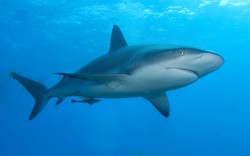
Listen to the Podcast to learn more!
For more information:
Wen, L., Weaver, J. C. and Lauder, G. V. (2014). Biomimetic shark skin: design, fabrication and hydrodynamic function. J. Exp. Biol. 217, 1656-1666.

- June 17
- , 2014
The World’s Greatest Pandemic (You’ve Never Heard Of)
Episode 59 by Stefanie Vogt (Click here to directly access the MP3)
(Access the full text transcript)

Listen to the podcast to learn more…
Sources:
LePage and Bordenstein. (2013) Wolbachia: Can we save lives with a great pandemic? Trends in Parasitology29:385-393.
Werren et al. (2008) Wolbachia: Master manipulators of invertebrate biology. Nature Reviews Microbiology 6:741-751.
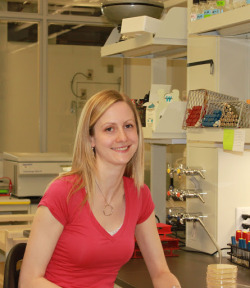 Stefanie Vogt is a postdoctoral fellow studying microbiology at the University of British Columbia and an alumna of the 2012 Banff Science Communications Program. She has shared her love of science with thousands of kids by organizing science competitions, science activities in rural Alberta, and a science-themed Harry Potter Day. Follow her on Twitter: @StefanieVogt.
Stefanie Vogt is a postdoctoral fellow studying microbiology at the University of British Columbia and an alumna of the 2012 Banff Science Communications Program. She has shared her love of science with thousands of kids by organizing science competitions, science activities in rural Alberta, and a science-themed Harry Potter Day. Follow her on Twitter: @StefanieVogt.
- May 9
- , 2014
